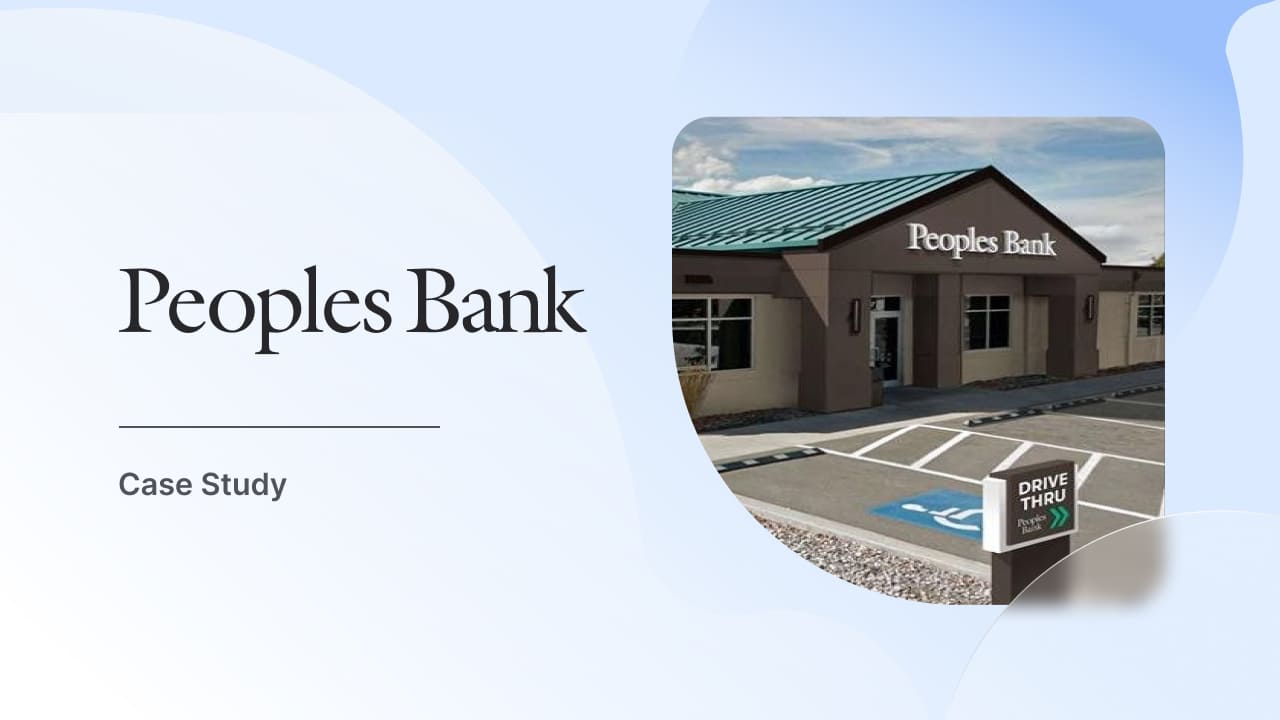If your company wants to improve service delivery across departments, Enterprise Service Management (ESM) software is the answer you are looking for. It builds on IT Service Management (ITSM) principles to bring structure, automation, and better collaboration to teams beyond IT, like HR and finance.
ESM has been on everyone’s radar lately. It is quickly becoming a go-to solution for leaders looking to increase efficiency and maximize their Service Management tools.
It’s a great starting point for a digital transformation strategy as it enables automation, integration, and a more data-driven approach to Service Management. Plus, it’s a great way to increase your company’s service desk software ROI!
To help you find the right fit, we’ve put together a list of the best ESM software options available today. The right choice will make a difference in both performance and cost, so read on to make sure you get it right!
What is Enterprise Service Management Software?
Enterprise Service Management (ESM) applies IT Service Management (ITSM) principles to other areas of an organization, such as HR, finance, and facilities. IT teams have long used structured processes and technology to manage support and services effectively, making ITSM a strong foundation for broader Service Management.
A key advantage of ESM is the ability to share a single platform across different teams. This reduces costs, eliminates redundant tools, and provides a unified experience for employees and customers. It also simplifies administration, improves collaboration, and enables better reporting.
Some common features include a self-service portal for submitting and tracking requests, workflow automation to standardize processes, a knowledge base for quick access to information, and service catalogs to organize available services.
Previously known as shared services, ESM guru and author Phyllis Drucker defines it as “every provider in the enterprise delivering service either through a global shared service center or individually but the same way, with the same tools.” Asked about it on our IT podcast Ticket Volume, she explained that the key lies in offering the same level of experience across the organization, regardless of the area providing the service.
Methodology and top Enterprise Service Management tools for 2026
Before we dive in, a note on our methodology: Our reviews are based on publicly available information, including vendor websites, product documentation, user reviews from sites such as Gartner Peer Insights, G2, and Capterra, analyst reports, and hands-on testing or demos when they are accessible. We evaluate each tool on features, pricing (when publicly shared), integrations, ease of use, and customer support.
InvGate creates IT Service Management software, so we're part of this market ourselves. That means some vendors mentioned here compete with us. Still, our goal is to give you accurate, honest, and useful information to help you choose what works best for you.
This information is current as of December 2025. We'll update this content regularly to reflect new product changes and market shifts.
Here's the list of top Enterprise Service Management tools for 2026. These aren't ranked in any particular order — each solution has its own strengths and fits different organizational needs. We've gathered them here to give you a solid starting point for your evaluation, whether you're looking for comprehensive ITSM capabilities, cross-departmental Service Management, or specific features that align with your business requirements.
Information accurate as of December 2025. Subject to change without notice.
InvGate Service Management
InvGate Service Management is a complete Service Management solution with strong ESM capabilities that enable cross-departmental digital transformation through streamlined workflows and self-service tools. Its easy-to-use interface and simple implementation are ideal for non-technical users to request and offer services through it.
Organizations can manage services across different business functions, allowing for the integration of IT, HR, Facilities, and more. The help desk structure is designed to allow you to branch them among all the areas in your organization and create different levels of service.
As for deployment, it allows for cloud-based for Starter/Pro tiers while Enterprise supports on-premise or hybrid.
InvGate Service Management features
- Service Catalog and Request Management - It provides you with the possibility to build a robust service catalog, enabling the creation and management of service offerings for different departments within an organization.
- Incident Management and Problem Management - These practices facilitate efficient issue resolution and root cause analysis. They are ideal for complex issues that involve and affect multiple areas. The best part is that you can build them as workflows to customize them to your organization’s specific needs.
- Knowledge Management - The solution promotes collaboration and knowledge sharing among teams, improving efficiency and reducing silos. It allows you to create knowledge base articles and attach them to different categories of the service catalog and to choose who can have access to them.
- Multiple channels of communication - You can offer omnichannel communication for the different areas across the organization.
InvGate Service Management pricing details
InvGate Service Management has flexible pricing options based on the number of agents and the features required.
- Starter at $17/agent/month up to 5 agents.
- Pro at $40/agent/month from 6-50 agents.
- Enterprise offers custom pricing for larger organizations.
If you want to test the software before making a purchase, you can sign up for a 30-day free trial.
InvGate Service Management customer testimonials and rating:
Ratings: InvGate holds a 4.6 score in Gartner Peer Reviews.
InvGate Service Management has all the capabilities and power needed to boost services across the whole organization. And that’s exactly what Peoples Bank and the retailer Farmacity did.
The first currently handles more than 65 help desks across ten areas of the company, while the second one has onboarded 24 departments and has almost eliminated the use of email to submit requests.
ServiceNow
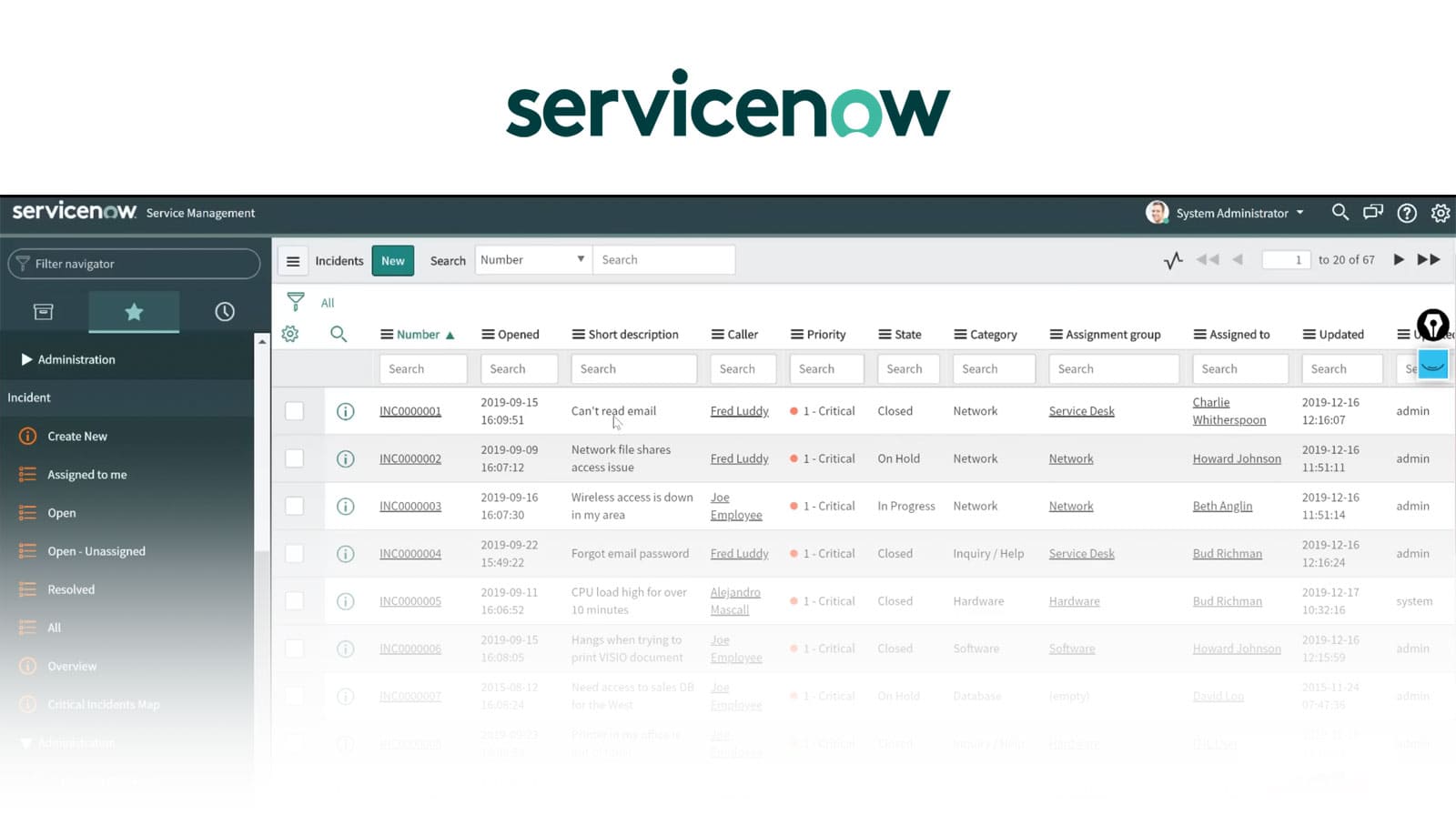
ServiceNow® IT Service Management (ITSM) is a widely used platform designed to manage IT and business services at scale. With strong ESM capabilities, it enables organizations to extend structured Service Management beyond IT to departments like HR, finance, and customer support. It’s scalable for large enterprises with hybrid/multi-cloud environments.
ServiceNow ITSM integrates natively with platforms like Microsoft Teams, Slack, Jira, and SAP, allowing businesses to connect IT and business services seamlessly. It is available as a cloud-based SaaS solution.
ServiceNow features
Here are some of the functionalities mentioned in their official features overview (accessed December 2025).
- Employee Center. A single portal where employees can request help from IT, HR, Finance, and other teams without jumping between systems.
- AI-powered incident support. AI helps sort incoming issues, create clear summaries, and offer recommended actions.
- Digital Portfolio Management. One workspace that brings together services, applications, and products so teams can plan, build, and operate them with access to operational data.
- Knowledge Management. AI and machine learning assist with creating, organizing, and sharing articles across the organization.
- Virtual Agent. A chatbot that understands everyday language and can resolve common issues.
ServiceNow pricing details
ServiceNow doesn't disclose its pricing, but it offers various licensing packages based on several factors, including the number of users, the types of licenses required, and the level of support needed.
ServiceNow user reviews and ratings
BMC Helix
 BMC Helix® Service Management works as a cloud-based platform designed to support both traditional ITSM needs and broader ESM initiatives. Teams like HR, Finance, or Facilities can use it to manage requests, track issues, and keep their work organized in one place.
BMC Helix® Service Management works as a cloud-based platform designed to support both traditional ITSM needs and broader ESM initiatives. Teams like HR, Finance, or Facilities can use it to manage requests, track issues, and keep their work organized in one place.
The platform can run in the cloud, on-premise, or in a hybrid setup, which suits large companies with mixed environments. It also integrates with development tools, cloud providers, and monitoring systems, so different teams can work together without switching between disconnected tools.
BMC Helix features overview
According to their website (accessed December 2025), these are some BMC Helix features.
- Unified service request catalog. Present services from multiple business units (IT, HR, Facilities, etc.) in one centralized catalog with automated approvals and SLA tracking.
- Advanced incident and problem handling.
- Integrated Knowledge Management with lifecycle controls and recommendations.
- Cross-cloud and cross-team brokering that connects internal teams and external vendors.
- Analytics and reporting for all departments.
BMC Helix pricing details
Pricing not disclosed publicly, available upon request.
BMC Helix user reviews and ratings
SolarWinds Service Desk
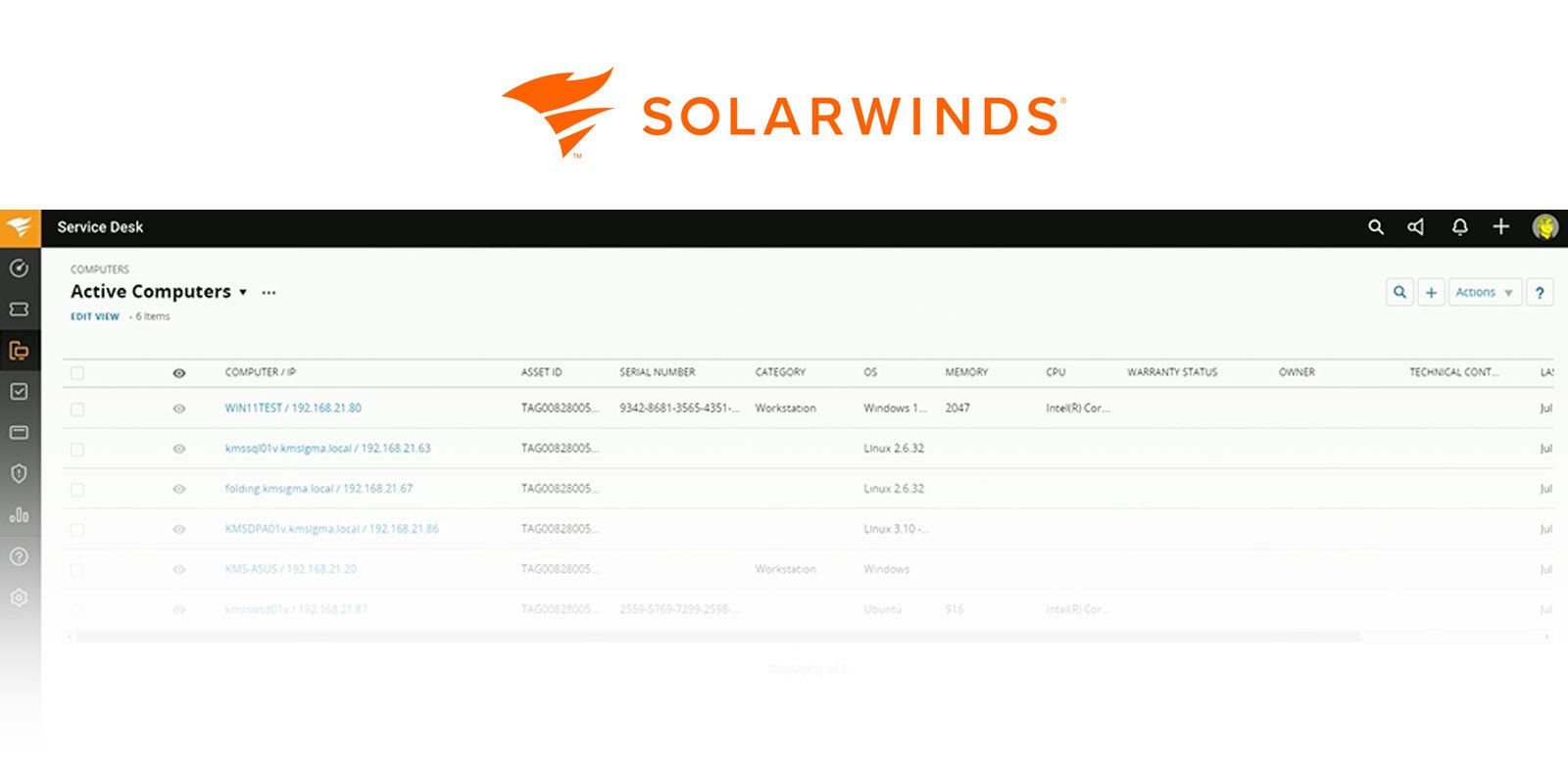
SolarWinds Service Desk® is a cloud-based ITSM platform that provides Service Management capabilities beyond IT, making it a practical choice for organizations adopting ESM. It focuses on enterprise automation, Asset Management, and streamlined service requests.
The platform offers native integrations with Google Workspace, Microsoft 365, Slack, and Zendesk, allowing organizations to streamline operations. It is a fully cloud-based solution.
SolarWinds features overview
Based on their official documentation (accessed December 2025), the platform supports these functionalities.
- Category-based ticket routing. Administrators can set up broad ticket categories, such as HR or Facilities, to direct requests to the right team without extra steps.
- Permission controls. Visibility and access can be limited by category or subcategory, so only the right teams can view or work on specific tickets.
- Dashboards. Real-time views of service desk activity with customizable widgets that highlight work queues, trends, and performance.
- Employee service portal. A customizable portal where employees can submit requests and find helpful information or resources.
- Reporting. Options to create tailored reports that show KPIs and team performance, with the ability to expand analysis through Power BI.
SolarWinds pricing details
SolarWinds Service Desk offers three pricing tiers. Keep in mind that the Essential tier might not be the right option for accessing the features you need for ESM. Asset pricing is not included; it is available upon request.
- Essentials: $39 per month / per technician.
- Advanced: $79 per month per technician.
- Premier: $99 per month / per technician.
- Checked on: Dec 2025 (US), official website.
SolarWinds user reviews and ratings
SysAid ITSM
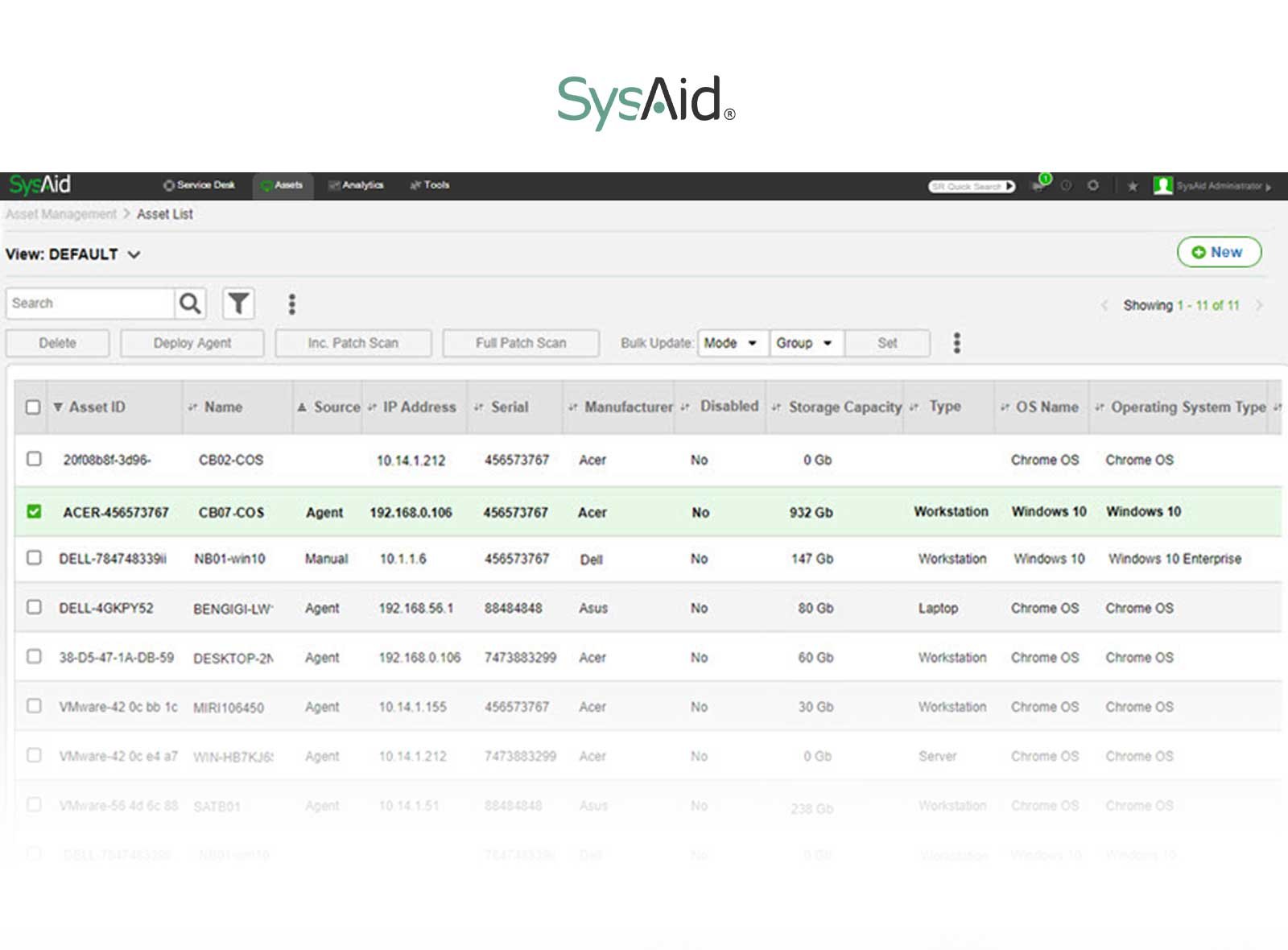
SysAid® is an ITSM and ESM platform that helps organizations manage internal services in a single system. IT, HR, Facilities, and other teams can use it to handle requests, track issues, and keep service information organized. It also connects with Microsoft Active Directory, VMware, Google Workspace, and Azure, ensuring compatibility with existing enterprise environments.
SysAid features overview
These are some of the platform's functionalities according to their official web (accessed December 2025).
- Workflow automation for end-to-end tasks like onboarding, change approvals, and escalations.
- Reporting and analytics to track KPIs, spot patterns, and make decisions.
- Self-service portal for employees to submit requests, follow their status, and search a knowledge base.
- SysAid Copilot for agents. Provides real-time help inside the agent workspace, offering summaries, suggested replies, and priority cues.
SysAid ITSM pricing details
SysAid's pricing is customized based on business needs; those interested must request a quote.
SysAid ITSM user reviews and ratings
Disclaimer: All product names, logos, and brands are property of their respective owners. All company, product, and service names used on this site are for identification purposes only. Use of these names, trademarks, and brands does not imply endorsement. Comparisons are based on publicly available information as of November, 2025 and are provided for informational purposes only.
How to choose an Enterprise Service Management platform
Choosing an ESM platform starts with recognizing that ESM is both a method and a tool. The software only works well when you understand the goals you want to meet, the maturity of your current processes, and the business areas that will rely on the platform. A good choice should give every team a consistent structure while still allowing flexibility in how they deliver their services.
Practical steps to guide the selection process include:
- Identify the services each department provides and the types of requests they handle.
- Review how each platform manages service catalogs, forms, and workflow automation.
- Check integration options with HR, Facilities, Finance, and other operational systems your company already uses.
- Compare reporting and dashboard capabilities to verify how well you can monitor trends and performance.
- Evaluate configuration effort, ease of maintenance, and how quickly teams can adopt the tool.
- Assess vendor support, implementation guidance, and the availability of training or documentation.
Gartner’s ITSM Market Guide for 2025 points to Enterprise Service Management (ESM) as one of the key factors shaping the future of ITSM. And we must say, the shift makes sense. Standardizing Service Management across departments improves efficiency, enhances collaboration, and provides unified metrics for better decision-making.
A strong ESM solution should make work easier for agents while helping employees resolve issues faster. InvGate Service Management is an ESM-ready option for organizations aiming to centralize requests and workflows across IT and other areas. A single portal, strong automation capabilities, and clear reporting tools help teams stay aligned while keeping their specific needs in place.
How do I choose the right Enterprise Service Management software?
Begin by mapping out what services each team offers and what kinds of
requests or issues they handle. Look for a solution that supports a unified service catalog, flexible workflows, and straightforward automation. Prioritize platforms that integrate with your existing tools and systems — avoiding siloed solutions that force extra overhead.
Choose software with easy-to-read dashboards and reporting tools so you can monitor performance and spot trends quickly. Finally, to avoid having an ESM project fail, make sure the system is easy to configure and simple enough for people outside IT to use without heavy training.
5 benefits of ESM systems
As you can imagine, standardizing processes across the entire business to provide a common experience has multiple benefits in itself.
Here, we list 5 relevant advantages of implementing an ESM approach, taken from our experience in the industry and the insights our clients share with us (but there are certainly more!):
- Enhanced service delivery: A change in mindset combined with a fit-for-purpose tool improves service quality. Plus, unifying the service process will improve the end-user experience, as they can solve all their issues from one single platform.
- Cross-area collaboration: ESM Tools promotes collaboration and communication among different departments on a common platform. Encouraging cross-functional interaction leads to better coordination, knowledge sharing, and better problem-solving.
- Improved decision-making: You get integrated Service Management data that lets you analyze trends, identify areas for improvement, and make data-driven decisions to optimize service delivery and resource allocation.
- Better resource allocation: ESM allows organizations to allocate resources effectively based on business priorities, providing visibility into resource availability, utilization, and demand. To achieve this, you can implement many things in your tool, such as building multiple help desks, creating workflows to collaborate in Request Management, and creating a knowledge base available to agents across the organization.
- Alignment with business objectives: With a solid ESM strategy, organizations can ensure that service delivery supports the strategic goals and priorities of the company, leading to better business outcomes.
And let us add one of our favorite benefits: When you decide to use the same ITSM tools across multiple departments, you can significantly boost your return on investment (ROI).
In fact, the Washington State community bank Peoples Bank tried this approach, and these are the words of their IT Service Desk Manager:
“We have been able to essentially achieve support synergy. There is a single place to go, not 23 different email accounts, and we love the new portal experience. That is an absolute game-changer. We are one full support department now, which is amazing, even though it spans so many groups and teams. It’s one place to go for help. And from an end-user perspective, that’s just amazing.”












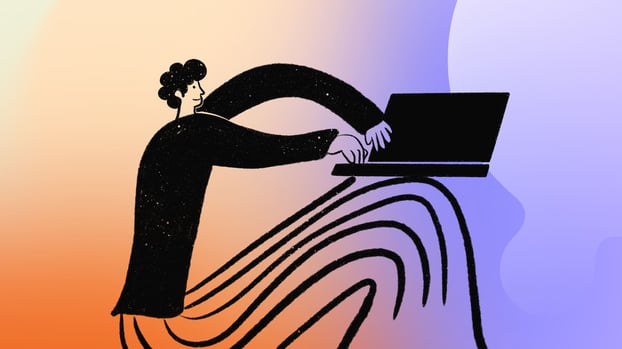





 BMC Helix® Service Management works as a cloud-based platform designed to support both traditional ITSM needs and broader ESM initiatives. Teams like HR, Finance, or Facilities can use it to manage requests, track issues, and keep their work organized in one place.
BMC Helix® Service Management works as a cloud-based platform designed to support both traditional ITSM needs and broader ESM initiatives. Teams like HR, Finance, or Facilities can use it to manage requests, track issues, and keep their work organized in one place.

